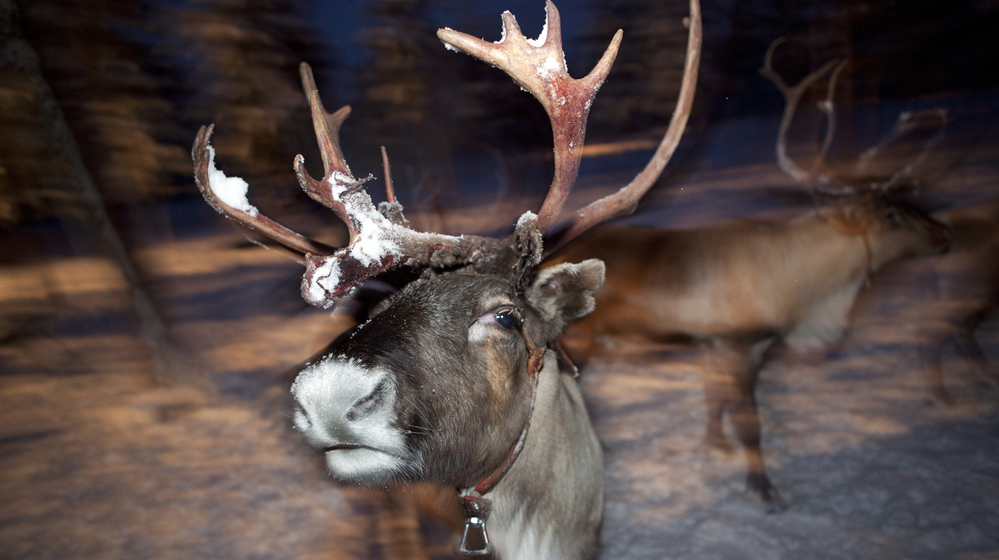Audio for this story from All Things Considered will be available at approximately 7:00 p.m. ET.
December 25, 2012
A recent study in the British Medical Journal concludes that Rudolph's nose is red "due to the presence of a highly dense and rich nasal microcirculation."
A recent study in the British Medical Journal concludes that Rudolph's nose is red "due to the presence of a highly dense and rich nasal microcirculation."
Ann Johansson/CorbisRudolph is of course known as the red-nosed reindeer, and scientists say they may know why that's the case.
Physiologist Dan Milstein with the University of Amsterdam and a group of colleagues examined the noses of several living reindeer.
"There was a much richer amount of blood vessels present inside Rudolph's or reindeer's nose in comparison to humans," Milstein says.
Rudolph also makes more snot. All of this blood and snot has to do with the fact that it's freezing cold in the Arctic. "It's an adaptation in order to deal with severe weather conditions," says Milstein.
Those blood vessels are basically part of Rudolph's internal air conditioner/heater. When Rudolph is resting, all those blood vessels warm the air on the way in. And then as he breathes out, those blood vessels soak up the heat from his breath, keeping him toasty.
And, when he's overheated â€" say from pulling a certain jelly-filled, extra jolly payload around â€" those blood vessels can actually release extra heat.
The study appears in the British Medical Journal.




